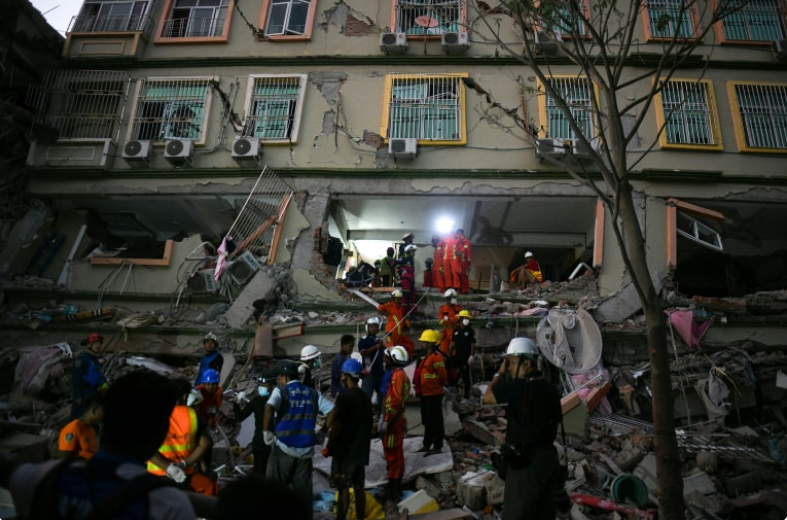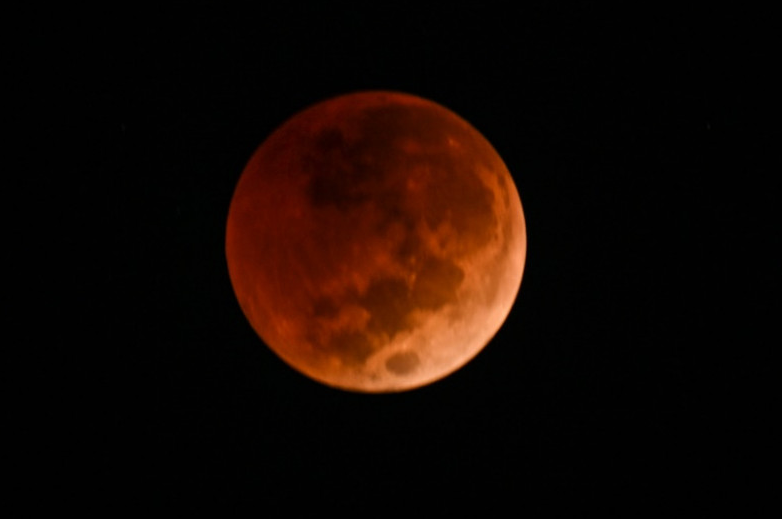‘Blood Moon’ rising: Rare total lunar eclipse set for tonight
PARIS — A “Blood Moon” will cast a crimson glow across a swath of the globe in the early hours of Thursday morning during a rare total lunar eclipse.
The celestial show can be observed from the Americas and the Pacific and Atlantic oceans and in the westernmost reaches of Europe and Africa.
The phenomenon occurs when the Sun, Earth and Moon align, casting a huge shadow of our world onto its natural satellite.
But as the shadow of Earth sifts across Moon, it does not completely blot out its white glow — instead the Moon takes on a reddish hue.
This is because “the only sunlight that makes it to the Moon gets bent and scattered” as it passes through Earth’s atmosphere, Daniel Brown, an astronomer at the UK’s Nottingham Trent University, told AFP.
It’s similar to how, on Earth, light can become pink or red at sunrise and sunset, he said.
And the dustier and cloudier the atmosphere on Earth — the redder the Moon will be.
The lunar eclipse, which will be visible for about six hours, on Friday morning, “is a great way to actually see the solar system in action,” Brown said.
The extent of time the Moon resides completely in Earth’s shadow — known as the totality — will last a little more than an hour.
This one has been nicknamed the “Blood Worm Moon,” a moniker for March full moons given by some Native Americans.
When can you see it? –
Starting at 1:09 am Eastern Time (0509 GMT) the moon will begin to appear as though a bite were being taken out of it, followed by the totality between 2:26 and 3:31 am, according to NASA.
In France, observers will see totality from 7:26 a.m. to 8:31 a.m. local time (0626-0731 GMT), according to the French Institute of Celestial Mechanics and Ephemeris Calculation.
But, until the Moon sets, only the most western stretches of Europe — including France’s famous Brittany region — will get a shot at seeing the totality.
In New Zealand, the predicament will be reversed, with the eclipse being visible only in partial form as the Moon climbs into view.
It is also poor weather in the United Kingdom but Brown said he hoped to “snatch a peak at the Moon with clouds above the horizon”.
The term “Blood Moon” causes Brown some ire, as he believes it has negative connotations and “is based on a misinterpreted end-of-the-world theory.”
But not all societies viewed these celestial displays in a negative light.
In Africa, lunar eclipses were seen by some as a battle between the Sun and Moon that could be soothed by people “showing on Earth how we work together” and a truce of old feuds, according to Brown.
“It’s an amazing story, and it should inspire us all right now,” he said.
Solar eclipse soon –
It will be the first total lunar eclipse since 2022 (although another one will happen this September).
Thursday’s phenomenon will be a “Micromoon,” meaning the Moon is the farthest it gets from Earth, and will therefore be about seven percent smaller than average, according to the website Earthsky.
This is the opposite of a “Supermoon,” which is what we saw during last year’s lunar eclipse.
And at the end of this month, some skygazers will be treated to a partial solar eclipse, which is when the Moon blocks out the Sun’s light on Earth.
On March 29 in the east of Canada, parts of Europe, northern Russia and northwest Africa, this eclipse will be seen.
Even a partial solar eclipse is dangerous to view with the naked eye, and people are advised to use special eclipse glasses or pinhole projectors.










